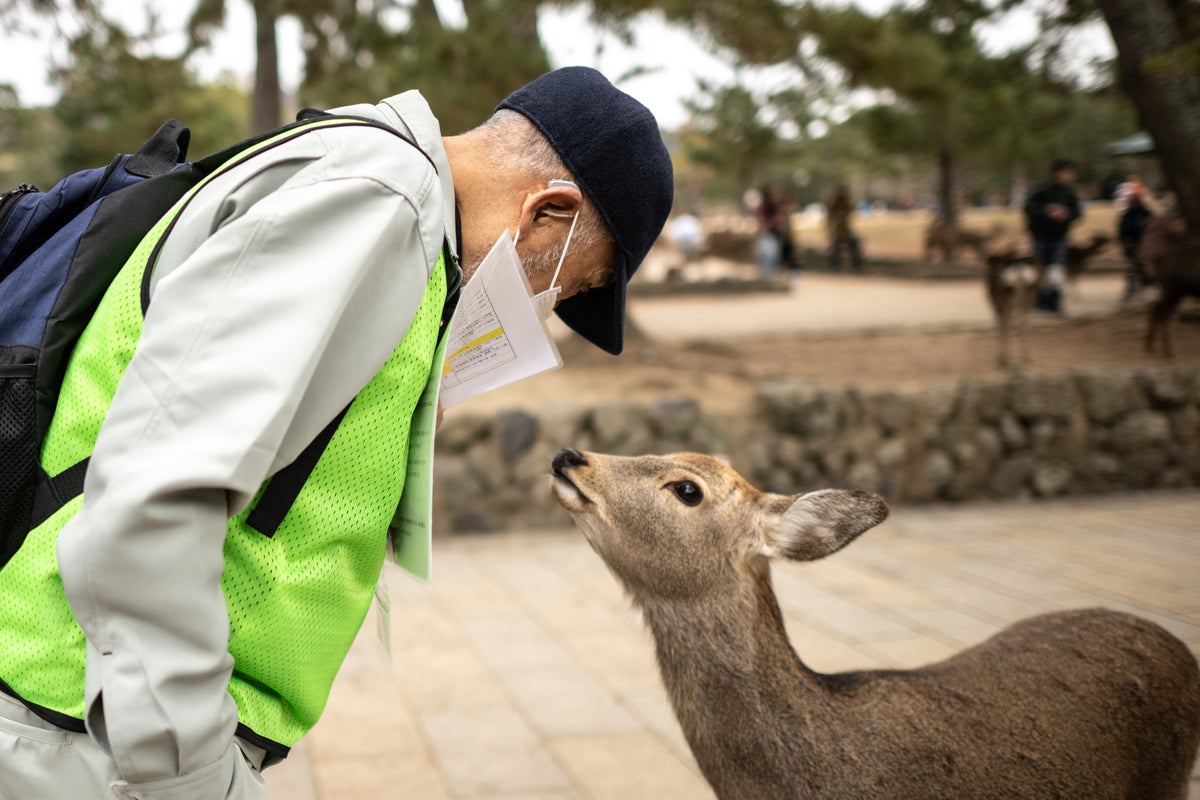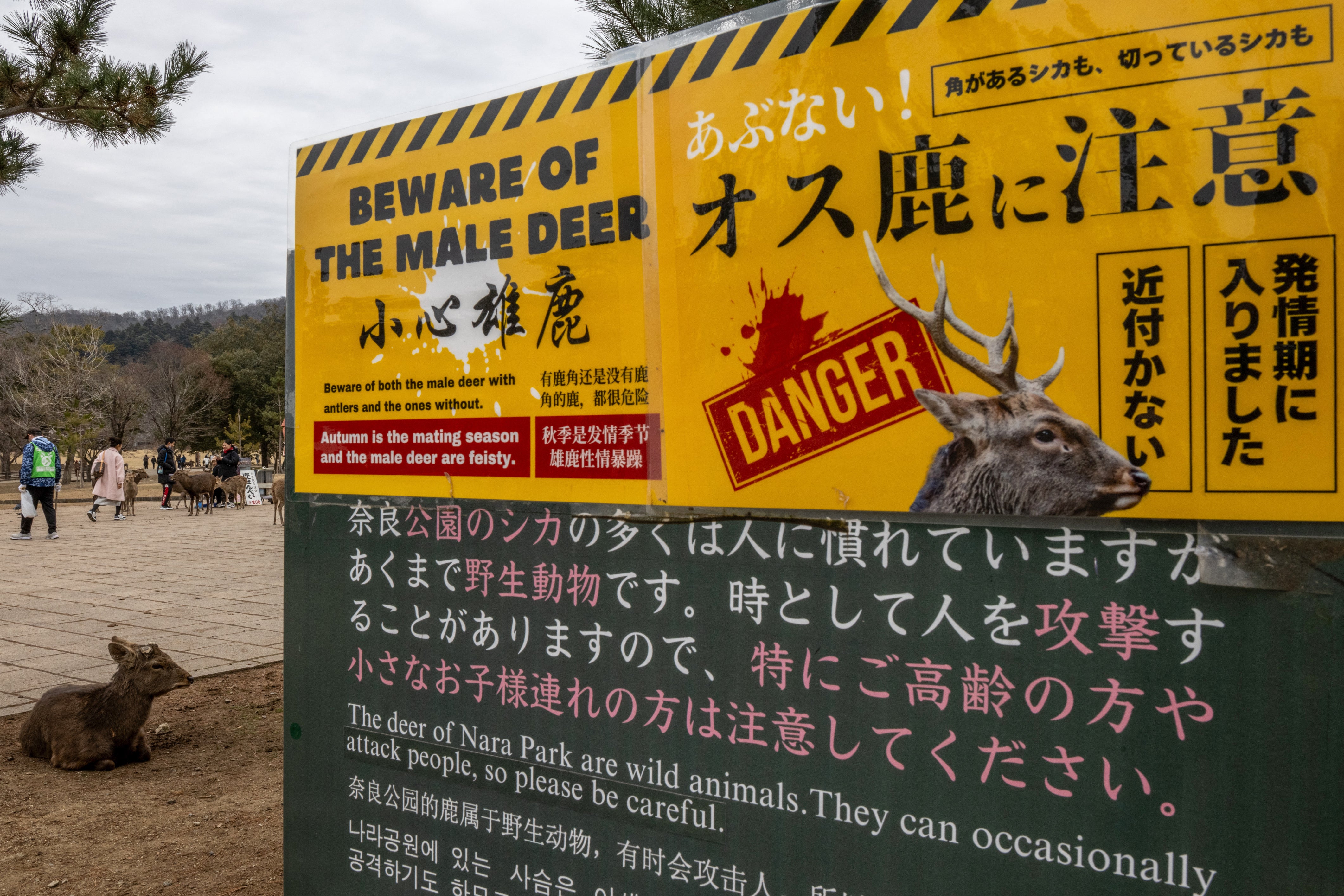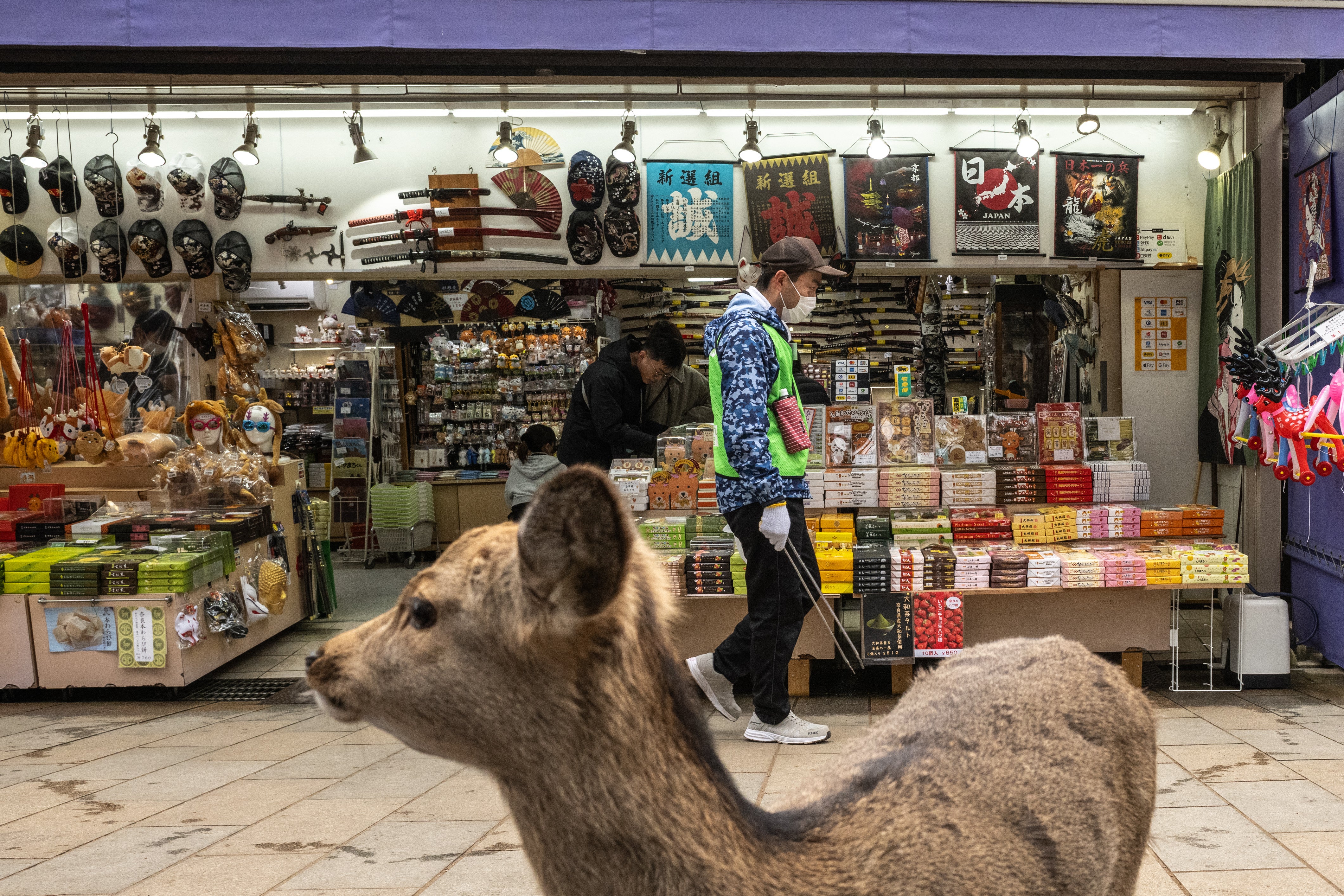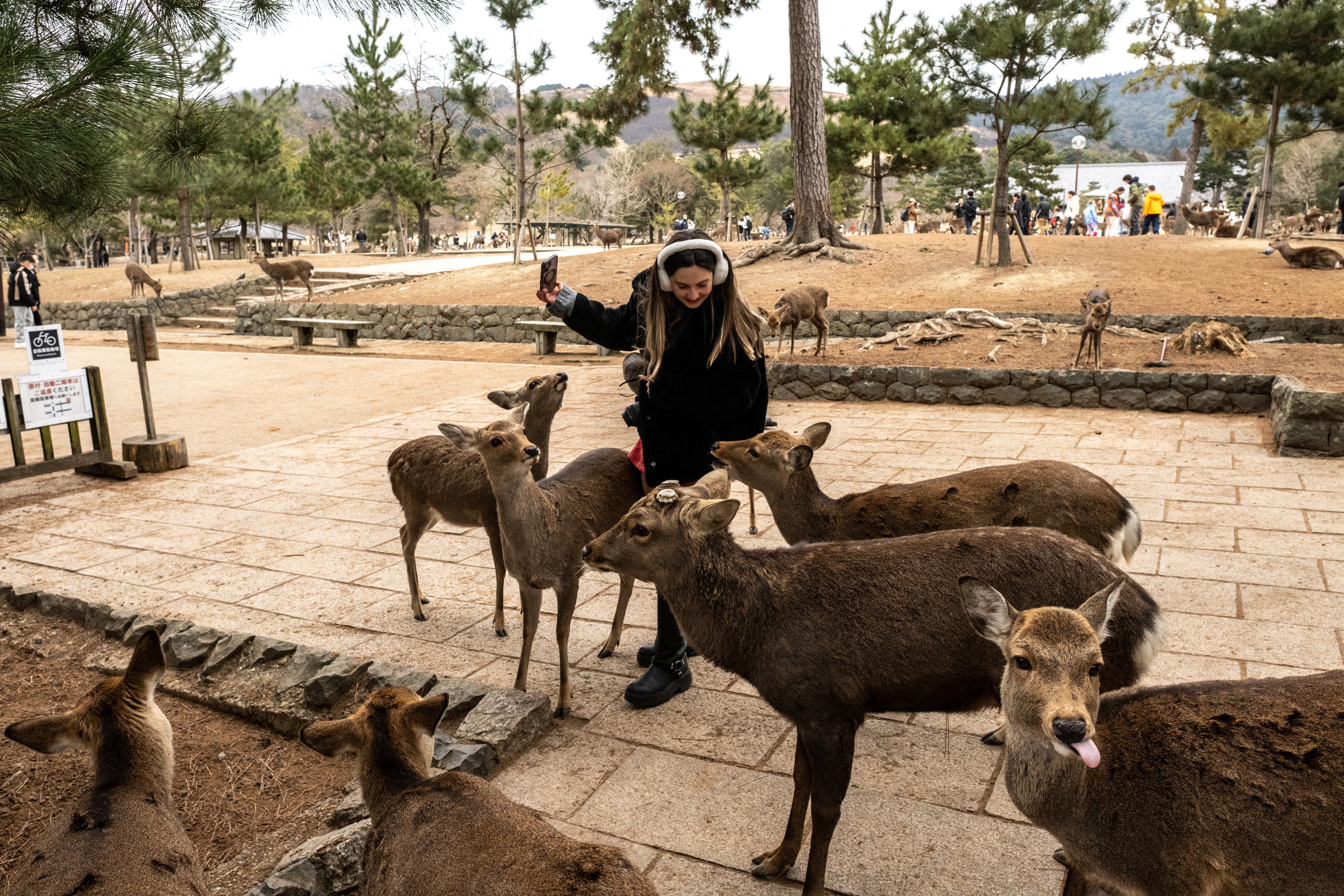
The deer population in Japan’s popular tourist attraction of Nara Park has reached record levels, leading to an increased number of injuries to the people who interact with them.
A survey conducted by the Nara Deer Preservation Foundation on 15 and 16 July this year recorded 1,465 deer in the park, marking an increase of 140 from last year and the highest count since the current survey method began in 1953.
The total included 315 stags, 816 does, and 334 fawns.
An unidentified representative from the Nara Deer Preservation Foundation was quoted as saying by Japan’s Nippon that “based on past trends, when more food is available, there are more births. With the increase in foreign tourists leading to more opportunities to eat rice crackers, the deer are gathering in flat areas and it is thought that this is raising the pregnancy rate”.
However, the growing deer population has brought new challenges, including more injuries to the tourists who interact with the deer in the park.
Other challenges include an increase in traffic accidents and incidents of deer venturing into urban areas in search of food, the Asahi Shimbun reported.
The prefectural government reported that visitor injuries from interactions with the deer have been increasing since 2021, reaching 159 cases last year, with 111 involving foreign tourists.
Many incidents were linked to excessive touching during photos or teasing the animals by withholding deer crackers, the Mainichi reported.

At the Nara Park, visitors can feed the deer digestive sugar-free crackers sold at nearby shops.
The prefectural government has also started distributing multilingual pamphlets in Japanese, English, and Chinese, urging tourists not to touch or provoke the deer, particularly ahead of the late-August mating season.
Nara’s deer, recognised as a national natural monument, are legally protected.
Both Nara Park and its surrounding areas are designated conservation zones, where capturing or removing the animals is strictly prohibited.
Last year, a prefectural expert panel chose not to expand culling zones, instead focusing on strengthening protective measures like fencing.

The Nara Deer Preservation Foundation representative said: “The deer in Nara are not free-roaming. They have lived in Nara Park a long time, staying a reasonable distance away from humans. If people get too close, they can be hurt, so caution is needed.”
From July last year to June this year, 140 deer died in the region – 10 more than the previous year.
Of these fatalities, 36 were caused by traffic collisions and 30 by illness, with over half of the traffic-related deaths occurring on two roads that pass through or alongside the park.
In recent months, the animals have also been seen grazing beyond their usual habitats, including the grounds of the Nara Prefectural Office and the Nara District Court, which lie across the busy National Route 369.

The deer have increasingly wandered into residential neighbourhoods and farmland as near Shin-Omiya Station, situated over a kilometre from the park.
On 2 August, a sika deer at Nara Park bit a tourist on the bottom while she offered it snacks. The incident, caught on camera, showed the deer chasing her through the park.
More recently, Sanae Takaichi, a candidate for the ruling party’s presidency, claimed on 22 September that some foreign tourists had kicked deer at Nara Park. However, she didn’t provide evidence.
Ms Takaichi first raised concerns about deer being kicked while discussing her policy to address crimes and misconduct by foreign visitors in Japan.

Researchers have raised concerns over the survival of Nara Park’s deer amid a programme to cut down acorn-bearing trees, which provide both a vital food source and shelter during winter for the animals.
While local authorities say only a small portion of the trees have been removed and the deer can find acorns elsewhere, experts warn that even a minor reduction in natural food, combined with damage to summer grass from heavy tourist activity, may make the animals increasingly reliant on human feeding.
Shiro Tatsuzawa, a deer-population specialist at Hokkaido University, told Japanese television news station MBS in July this year that hungry deer could venture beyond the park, potentially causing crop damage and more aggressive interactions with visitors.
“The base of these trees becomes a critical place that determines whether the deer can survive winter. Nobody seems to be considering things from the deer’s perspective,” he said.
In March this year, it was reported that after nearly 40 years without them, Nara Park reinstalled public trash cans to protect its nationally protected deer, responding to rising litter from increasing numbers of foreign tourists.







